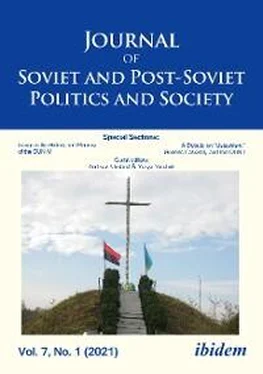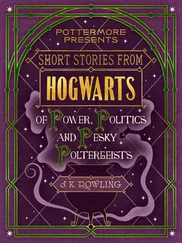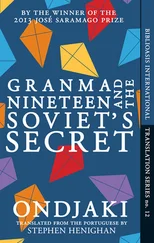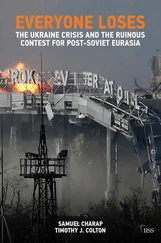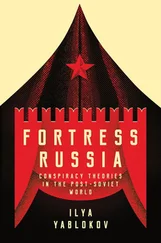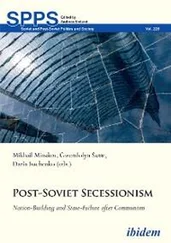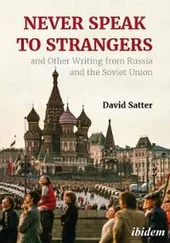In the pre-war period, Volhynia and Eastern Galicia were parts of the Polish state. They were inhabited by more than five million Ukrainians and one and a half million Poles (as well as around seven hundred and fifty thousand Jews, most of whom were murdered during the Holocaust). In September 1939, these areas were seized by and illegally annexed to the USSR; from 1941 they were occupied by the German army; and at present they make up the western part of the Ukrainian state. These areas saw the operation of the Ukrainian Insurgent Army (UPA) which was formed in 1943 and was subordinate to the Banderite wing of the Organization of Ukrainian Nationalists (OUN-B). Its purpose was to fight for the creation of an independent, united, and de facto mono-ethnic Ukrainian state.
Immediately after the German attack on the USSR, Ukrainian nationalists counted on the emergence of an independent state similar to Croatia ruled by Ustaše, and therefore they supported the attacking Wehrmacht by organizing a series of diversions. They also took part in numerous anti-Jewish pogroms. 3However, the members of the body established in Lwów/Lviv by the OUN, which proclaimed itself to be the Ukrainian government, was interned. Hitler decided to include Eastern Galicia in the Generalgouvernement—the German administrative unit for those parts of Poland which had been not annexed by Germany in 1939, whereas Volhynia became a part of “Reichskommissariat Ukraine.” In this situation, the Bandera followers also joined the anti-German underground. At the beginning of 1943, OUN-B created numerous partisan units called the Ukrainian Insurgent Army (UPA). They began to fight against the German police forces, though in a limited way (which did not prevent the UPA making an agreement with German intelligence in 1944) and they started an open war with the communist partisans.
One dark episode in the history of this organization is the “anti-Polish operation” launched on 9 February 1943 with the intention of physically eliminating (by killing or expelling) the Polish population in all areas which—according to the OUN and the UPA—were to become parts of the future Ukrainian state. Brutal, genocidal purges lasted until the beginning of 1945, and as a result about 100,000 Poles were killed. At least 1–2 thousand Jews in hiding also fell victim to the OUN and the UPA. 4
However, the leadership of the OUN and the UPA viewed the USSR as the biggest threat to Ukrainian independence aspirations. Mindful of the experience of the 1930s, when in Ukrainian lands belonging to the USSR the communists provoked artificial famine as a result of which three million people died, the leadership feared that Ukrainians living in Volhynia and Galicia might suffer the same fate. This is why the activity of the Ukrainian underground movement increased considerably once the front had moved through these areas. Local residents were called on to boycott the Red Army mobilization and prohibited from providing the obligatory in-kind contributions. UPA members killed local activists and attacked the newly-created village councils. The guerrilla movement spread into vast wooded areas and in both regions met with massive support on the part of the local Ukrainian population.
In mid-1944, the UPA reached the peak of its development. More than a hundred sotnias (the equivalent of a company or a squadron) had between twenty-five thousand and thirty thousand guerrilla fighters. When this number is increased by groups of conspirators organized in units covering a major portion of Ukrainian villages and by numerous supporters, it can be assumed that UPA units were able to mobilize up to a hundred thousand individuals. The spirit of resistance was reinforced by rumors being spread suggesting that the Soviets intended to “physically annihilate” the Ukrainian nation and planned to displace all Ukrainians from the two regions to Siberia.
Although as early as the beginning of 1943 the communists were aware of the fact that the UPA existed (they knew it for example from reports provided by their own guerrilla movement), initially they tended to disregard or at least to underestimate the UPA’s strength and influence. 5One breakthrough moment was when General Nikolai Vatutin, a hero of the Battle of Stalingrad, was seriously wounded in an ambush laid on him by the UPA in February 1944 (he died of his injuries several weeks later in a hospital in Kyiv). In March 1944, the activity of the UPA was examined by the State Defense Committee of the USSR. A decision was made to boost forces responsible for fighting the guerrilla movement on the one hand, and carrying out large-scale repressions against members of the underground movement and their relatives, on the other. Recommendations were issued for example to organize public executions and to displace “criminals” and their families. 6To tarnish the image of the resistance movement, from the beginning in official language guerrilla fighters were referred to as “Ukrainian-German nationalists,” which was intended to suggest that the OUN and the UPA had close ties to the Nazis.
In Volhynia and Eastern Galicia, activities targeting the Ukrainian underground movement were commanded by People’s Commissar of Internal Affairs of the USSR Ivan Ryasnyi, his deputy Tymofiy Strokach, and People’s Commissar of Security Affairs of the USSR Sergei Savchenko. In October 1944, the Soviets managed to reconstruct the network of Soviet security bodies, i.e., the NKVD/NKGB, to which the NKVD Internal Troops were operationally subordinate.
It was to some degree natural for the NKVD Internal Troops to bear the main responsibility for carrying out operations targeting guerrilla fighters. By 25 March 1944, the 9th Ordzhonikidze Division and the 10th Sukhumi Division of the NKVD Internal Troops arrived in Volhynia and Podolia. They had just finished the deportations of the Chechen and the Kalmyk populations. Apart from that, eight Motor Rifle Brigades of the NKVD Internal Troops 7were ordered to go to Volhynia, alongside the 18th cavalry regiment and a special armored battalion from the 1st Feliks Dzerzhinskii Division. According to official statistics, each brigade was supposed to be composed of five battalions with a total of 4,050 soldiers, 8however, in fact the NKVD units were numerically smaller than this. According to Anatoliy Kentiy, Ukrainian historian and expert on the history of the UPA, as at 9 October 1944, 26,304 soldiers of the NKVD Internal Troops were involved in the fight against the underground movement in Western Ukraine. 9In October 1945, the NKVD Internal Troops were reorganized to form the 62nd, 65th, 81st, and 82nd divisions of the NKVD Internal Troops. According to official plans, each division was to be composed of four regiments, each comprising 1,450 soldiers; however, in fact hardly any of these units had as many soldiers. As at 1 February 1946, 22,907 soldiers of the NKVD Internal Troops were involved in the fight against the underground movement in Western Ukraine. 10
Immediately after the front had moved through this area, the NKVD troops launched “chekist-military” operations which guerrilla fighters referred to as the “red broom.” Major forces encircled big wooded areas alongside the villages situated there, and combed them one by one. During these operations all armed guerrilla fighter groups were destroyed and all men aged sixteen to sixty were detained and checked. Operations of this type brought considerable results, especially in the initial period.
The Soviets decided to carry out one of the first such operations following the ambush in the Kremenets Forest in which General Vatutin was fatally wounded. The action carried out on 21–27 April involved four brigades of NKVD troops, a cavalry regiment, an armored sub-unit (15 tanks) and light air force. The Soviet forces were composed of a total of more than fifteen thousand individuals. 11More than four thousand guerrilla fighters from the UPA-North and UPA-South command groups were encircled, however, only between two and a half thousand and three thousand of them carried any weapon; the remainder were fighters who had recently been forcibly recruited. Alongside these fighters, at least around a thousand civilians were encircled. The heaviest fighting happened on 23 and 24 April when the Soviets started to comb the forests simultaneously from all sides. On 24 April, near Hurby (now a small village in Rivne oblast’), guerrilla fighters managed to repulse three consecutive attacks by the NKVD. However, due to the fact that the situation was difficult, the UPA decided to break out of the encirclement at night, leaving the entire heavy equipment, the wounded fighters, and the civilians behind. On the morning of 25 April, following a brief clash, UPA units, split into three groups, broke out of the encirclement and separated themselves from the enemy. Despite this, on 25–27 April the Soviets continued to comb the forests near Kremenets (Ternopil’ oblast’) and to spot small groups of remaining fighters hiding in the forest. If we were to believe Soviet reports, as a result of this operation 2,018 individuals were killed and another 1,570 arrested. The following pieces of equipment were seized, among other things: a U-2 plane, seven guns (mainly 45 mm guns), fifteen mortars (2–120 mm), forty-two light machine guns, thirty-one sub-machine guns, and 298 rifles. In their clashes with the guerrilla fighters, the NKVD Internal Troops lost eleven soldiers who were killed and another forty-six who were wounded. A different account of the events can be deduced from figures provided by the guerrilla fighters. They reported 136 fighters killed and another seventy-five wounded; apart from that the NKVD reportedly murdered around a hundred civilians. 12The figures provided by the NKVD regarding the losses suffered by the enemy should be contrasted with the number of items of weaponry seized: it is worth noting that these would not be sufficient to arm the individuals killed, not to mention the prisoners of war.
Читать дальше
